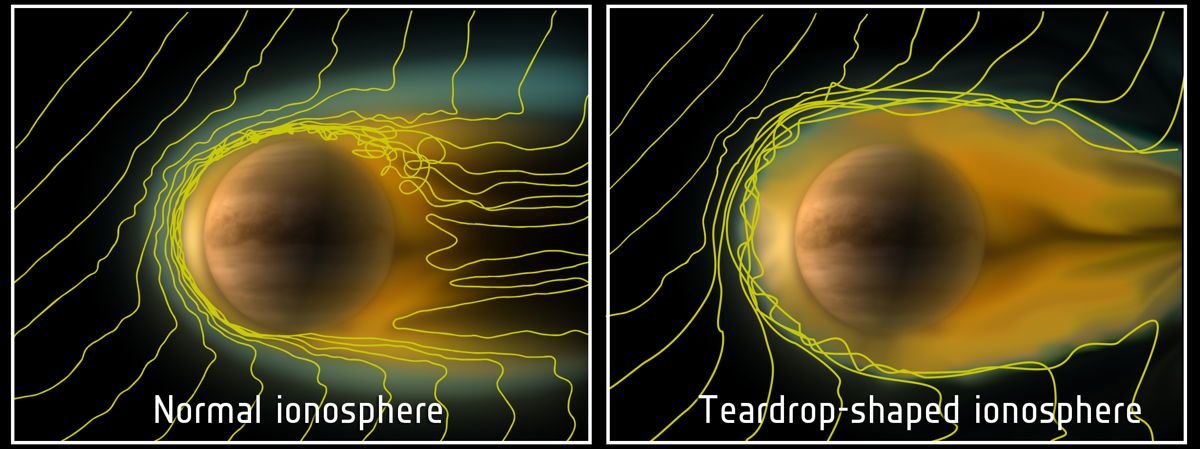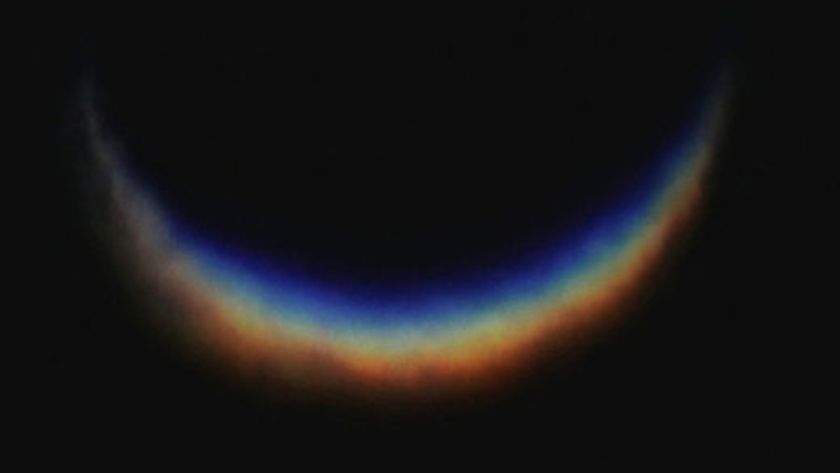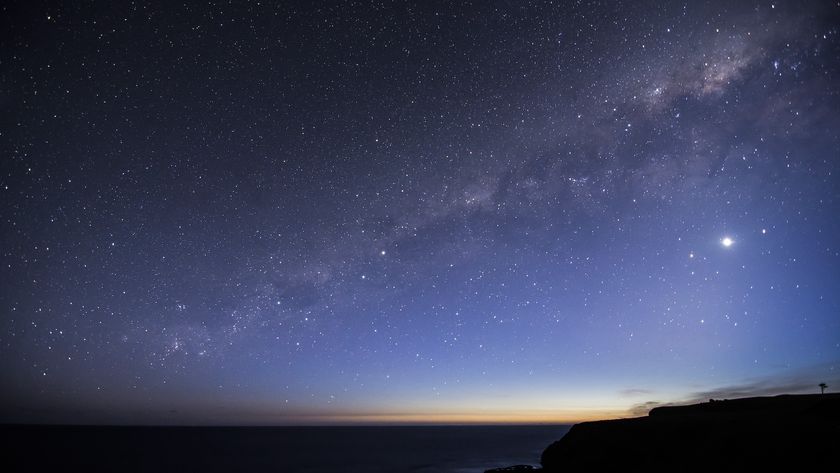Venus Can Have 'Comet-Like' Atmosphere

The planet Venus sometimes looks less like a planet and more like a comet, scientists say.
Scientists with the European Space Agency have discovered that a part of the upper atmosphere of Venus — its ionosphere — acts surprisingly different depending on daily changes in the sun's weather. The side of Venus' ionosphere that faces away from the sun can billow outward like the tail of a comet, while the side facing the star remains tightly compacted, researchers said.
The discovery was made using ESA's Venus Express spacecraft, which observed Venus's ionosphere during a period of low solar wind in 2010 to see exactly how the sun affects the way the planet's atmosphere functions. In 2013, the sun is expected to reach the peak of its 11-year solar activity cycle.
"As this significantly reduced solar wind hit Venus, Venus Express saw the planet’s ionosphere balloon outwards on the planet’s ‘downwind’ nightside, much like the shape of the ion tail seen streaming from a comet under similar conditions," ESA officials said in a statement today (Jan. 29).
It only takes 30 to 60 minutes for the planet's comet-like tail to form after the solar wind dies down. Researchers observed the ionosphere stretch to at least 7,521 miles (12,104 kilometers) from the planet, said Yong Wei, a scientist at the Max Planck Institute in Katlenburg, Germany who worked on this research.
Earth's ionosphere never becomes comet-like largely because the planet has its own magnetic field that balances out the sun's influence on the way the atmospheric layer is shaped. Venus, however, doesn't have its own magnetic field and is therefore subject to the whims of the sun's solar wind.
Researchers think that Mars behaves in much the same way. The Red Planet doesn't have a magnetic field to mitigate the influence of the sun's wind either.
Sign up for the Live Science daily newsletter now
Get the world’s most fascinating discoveries delivered straight to your inbox.
The Venus Express spacecraft launched in 2005 and has been orbiting the second planet from the sun since 2006. The spacecraft is equipped with seven instruments to study the atmosphere and surface of Venus in extreme detail. The spacecraft is currently in an extended mission slated to last until 2014 .
This story was provided by SPACE.com, a sister site to Live Science. Follow Miriam Kramer on Twitter @mirikramer or SPACE.com @Spacedotcom. We're also on Facebook & Google+.














